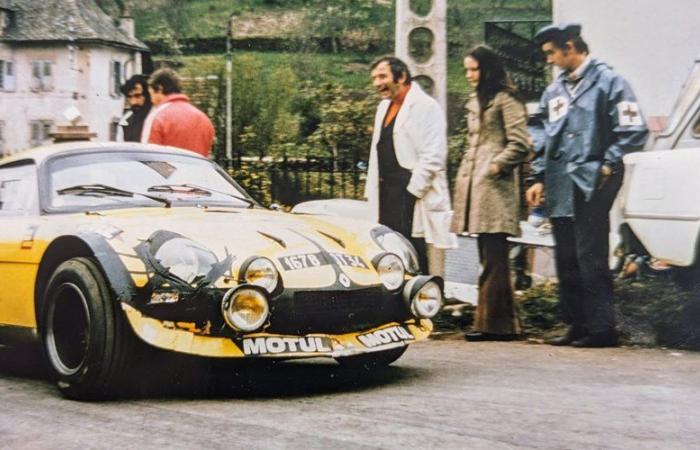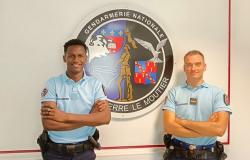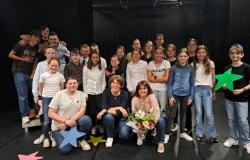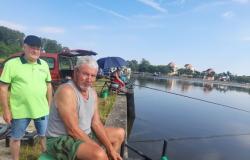Four years after the arrival of motorsport in the Ruthénois, a group of enthusiasts including the president of the ASA Route d’Argent, Jean Viarouge, took up the challenge of creating a rally. Then named the criterium du Rouergue, the event, which is preparing to celebrate its 50th anniversary this weekend, started on a certain April 6, 1974…
If the Rouergue rally was created in 1974 by a group of enthusiasts who were members of the ASA Route d’Argent, it was about fifteen years earlier, in 1961 to be exact, that motor sports arrived in the department. It was then karting, the first track of which was created in 1963 in Druelle. A sport imported from the USA. Six years later, in 1969, motor sports made their appearance in the Ruthénois with the Bonnecombe hill climb, which quickly met with great popular success. A few years later, at the end of 1973, a group of enthusiasts, including Jean Viarouge, the president of the ASA Route d’Argent since 1972, an ASA which had been created in 1967, took on the slightly crazy challenge of creating a car rally. Six months later, after hard work and many sleepless nights, on April 6 and 7, 1974, the event that was then called the Rouergue Criterion took off. A successful takeoff since in 2024, the race that became the Rouergue Rally is still on the calendar, and is a major and unmissable event in the French Rally Championship. If the race, a large part of which took place at night, between midnight and 1 p.m. to be precise, started from Rodez, it was in Villecomtal and its surroundings that it was contested.
Villecomtal, heart of Rouergue
Pourquoi Villecomtal ? “With Jean Viarouge, Michel Ratier and Serge Rigal, whose wife was a hairdresser in Villecomtal, we often went to Villecomtal to party and have our hair done by Serge’s wife”remembers Max Kuhn, a well-known figure in the automotive world who served for a long time as race director, among other things. The happy gang often met at Picou’s, a hotel-restaurant that would quickly become an essential location for the rally, known to all the drivers in France who made it their headquarters. Sometimes even several weeks in advance to recognize the event and spend unforgettable moments.
“The roads in the area were nice and suited well to rallying.. specifies Max Kuhn, Also, when the idea of organizing something arose, it was quite naturally towards Villecomtal and its surroundings that the organization turned.” At the time, the Rouergue criterium consisted of three special stages: Villecomtal-Pont de Mouret (13 km), Les Albusquies Notre-Dame-des-Hauteurs (18.250 km) and Estaing Villecomtal (14.750 km), each to be covered six times. That is 276 km of timed sectors for a total of more than 500 km, including liaisons.
A popular success from the start
A real marathon, almost half of which was run at night. Between each of the six loops, the crews provided assistance in the streets of Villecomtal. Some, most of them, on the pavement of the main street and a few privileged ones in the courtyards of houses kindly made available by locals, often acquaintances. It was all this excitement, not forgetting the start of the first special on the Villecomtal bridge and the finish of the third on the descent of the cemetery, which made the small town of Rougier famous far beyond the borders of France. A Villecomtal cemetery which, during the race, was certainly more crowded than on All Saints’ Day. “For the little storyadds Max Kuhn humorously, I remember a certain Fourcade Stomato from Montpellier, who was keeping time for many events, who passed, stopwatch in hand, (the timing was then manual, Editor’s note) all weekend of the first Rouergue in the Villecomtal cemetery.”
Although the race had many twists and turns, including that of the winner Noquin who, having taken the wrong road at an intersection, hit a police van while returning in the right direction, it was also a real popular and sporting success. At the Bowling du Rouergue, during the prize-giving ceremony for this first edition, which saw the Béziers crew Noquin-Virgos win ahead of the women’s crew Mouton-Furia from Grasse, the organising team and the ASA Route d’Argent could only congratulate themselves on having taken this slightly crazy gamble and dared to create the rally. A gamble that could have been stopped dead in its tracks, because we must not forget that at the start of 1974, France and the world had just suffered the first oil shock. Between October 1973 and January 1974, the price of oil increased more than fourfold. But as the advertisements kept hammering him with all day long: “In France, we don’t have oil but we have ideas”Fifty years later, Rouergue is still proof of this.






